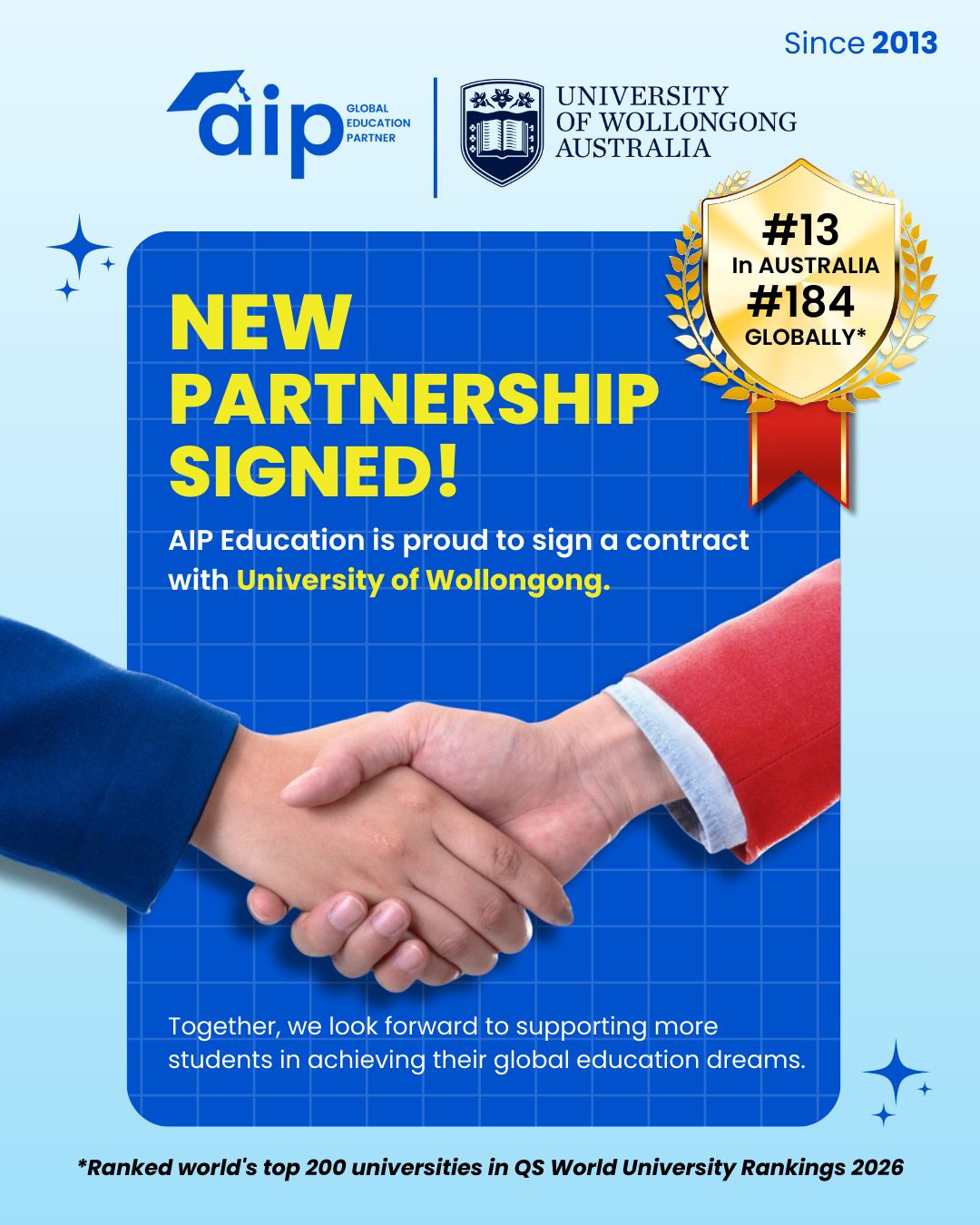Australia Post-Study Work Rights Explained

Studying abroad opens up many opportunities, not just the academic qualification, but the chance to build a career, network internationally, and live in a new environment. For many international students in Australia, one of the most important questions is: What happens after I finish my studies?
That’s where Australia’s post-study work rights come into play. This blog aims to explain the landscape of work rights for international graduates in Australia, especially through the Temporary Graduate visa (subclass 485) and related streams. Whether you are planning to study in Australia or you’ve just graduated, understanding your options will help you make better decisions for your future.
Table of Contents
- What is Australia’s post-study work rights?
- The main visa: Temporary Graduate Visa (subclass 485)
- Streams under the 485 visas
- Eligibility criteria: what you need to qualify
- Duration of stay: how long you can work
- Recent changes & important updates
- Benefits of staying and working after study
- Pathways from post-study work to permanent residency
- Application process & key tips
- FAQs
- Conclusion
What is Australia’s post-study work rights?
Australia post-study work rights refer to the legal permission for international students, who have completed their studies, to stay in Australia for a period of time and work full-time (or not be restricted by student-level work hours). These rights turn your student visa exit point into a stepping stone into the labor market.
In Australia, this is primarily delivered via the Temporary Graduate Visa (Subclass 485) which allows you to live, work and study after your qualification is completed.
Why is this important?
- It gives you real-world experience in Australia, which many employers value.
- It may help you build a pathway toward permanent residency if you choose to stay longer.
- As a student, it makes choosing Australia more appealing — not just for education but for career building.
The main visa: Temporary Graduate Visa (Subclass 485)

The Temporary Graduate Visa (subclass 485) is the cornerstone of the Australia post-study work rights
Important aspects:
- It is a temporary visa; you don’t automatically get permanent residency just because you have one.
- It allows you to live, work and study in Australia for a set duration depending on your stream and qualification.
- There are two (or more) streams under this visa
- It is only open to graduates of eligible Australian courses (registered, CRICOS-approved).
Streams under the 485 visa
Post-Higher Education Work Stream
This stream is aimed at graduates who have completed a higher education (university) qualification in Australia: bachelor’s, master’s, doctoral.
Duration of stay (generally):
- Bachelor’s or Master’s by coursework: up to 2 years in many cases.
- Master’s by research or PhD: roughly up to 3 years for many applicants.
- There were extensions for certain qualifications under “skills shortage” categories (see section 7).
Post-Vocational Education Work Stream
This stream covers graduates of VET (Vocational Education & Training) or trade qualifications who have studied relevant courses and may nominate an occupation
Key aspects:
- More restrictions: you often need to have finished a trade or diploma and nominate an occupation on the Skilled Occupation List.
- Duration is shorter in many cases (for example up to ~18 months) for many applicants in this stream.
Second Post-Higher Education Work Stream (Regional)
For graduates who studied in a regional area of Australia or continue to live and work in regional areas, there may be extended stay periods under regional arrangements.
Working in regional Australia is encouraged by the government and can open longer stay options and may help with skilled migration in certain pathways.
Eligibility criteria: what you need to qualify
Before applying for the Temporary Graduate Visa (subclass 485), the main visa that grants post-study work rights in Australia, international graduates must ensure they meet several eligibility requirements. These criteria are essential to secure your chance to work after study in Australia and transition from a student visa to full-time work status.
To apply successfully for the 485 visa, you must meet several requirements. These criteria may change, so always check the official Department of Home Affairs website.
Here are the main eligibility points:
Valid Student Visa History
You must currently hold, or have held, a student visa (subclass 500) within the required timeframe. This confirms that you have been legally studying in Australia and are transitioning from your education phase to the post-study work visa stage.
Completion of an Eligible Qualification
You must have successfully completed a qualification from an approved Australian education provider. The course must:
- Be CRICOS-registered (Commonwealth Register of Institutions and Courses for Overseas Students).
- Meet the Australian Study Requirement, which generally means a minimum of two academic years (92 weeks) of study.
- Have been conducted in English and onshore (in Australia).
Eligible qualifications include bachelor’s, master’s, doctoral, or approved vocational (VET) programs. Completing such courses is the foundation for claiming your Australia post-study work rights.
Timely Application Submission
You usually need to apply for your Temporary Graduate Visa (subclass 485) within six months of course completion. Missing this window can disqualify you, so it’s important to plan your visa transition as soon as your final results are released.
Health and Character Requirements
All applicants must meet Australia’s health and character standards. This involves:
- Undergoing approved medical examinations.
- Providing police clearance certificates from any country where you have lived for 12 months or more in the last decade.
- These requirements ensure applicants maintain the standards set for residence and employment under Australia’s post-study work rights program.
English Language Proficiency
Depending on your stream, you may need to prove English language ability through tests such as IELTS, PTE Academic, TOEFL iBT, or OET. Each test has a minimum score requirement, typically equivalent to IELTS 6.0 overall, with no band below 5.0 (or equivalent in other formats).
Skills Assessment for Vocational Graduates
If you are applying through the Post-Vocational Education Work Stream, an approved skills assessment may be required. You must also nominate an occupation that appears on Australia’s Skilled Occupation List (SOL). This aligns your qualification with current labor market demands, a key advantage if you plan to transition toward Australia post-study work rights and skilled migration or permanent residency (PR) later.
Compliance and Genuine Intent
You should demonstrate a genuine intention to live and work temporarily in Australia. Maintaining full compliance with your student visa conditions (attendance, study load, and work limits) strengthens your post-study visa application.
Duration of stay: how long you can work
A common question among graduates is: “How long can I stay and work in Australia after finishing my degree?” The answer depends on your qualification level, visa stream, and study location (metropolitan or regional Australia).
The Temporary Graduate Visa (subclass 485) provides flexible durations that allow international graduates to gain professional experience in Australia, a crucial benefit of the Australia post-study work rights system.
Here’s a general breakdown of how long you can stay:
| Qualification Level | Visa Stream | Approximate Duration of Stay | Notes |
| Bachelor’s or Master’s by Coursework | Post-Higher Education Work Stream | Up to 2 years | Common for university graduates in metropolitan cities |
| Master’s by Research | Post-Higher Education Work Stream | Up to 3 years | Allows more time for research-based graduates to build expertise |
| Doctoral (PhD) Graduates | Post-Higher Education Work Stream | Up to 3 years | Some may receive longer durations depending on research focus |
| Vocational or Trade Diploma | Post-Vocational Education Work Stream | Up to 18 months | Must relate to an occupation on the Skilled Occupation List |
| Regional Graduates | Second Post-Higher Education or Regional Stream | 2–4 years (additional) | Extended stay for those who studied and/or work in regional Australia |
Note: There were special extensions for graduates in areas of “verified skills shortage” from 1 July 2023, but importantly these extensions will end from mid-2024. Department of Education
It’s crucial to check your individual case as durations vary and the policy changes.
Recent changes & important updates
The rules for Australia post-study work rights have evolved, so being aware of the latest changes is key.
Major updates:
- From 1 July 2023, certain higher education graduates with eligible qualifications in “areas of verified skills shortage” were granted extra two years of post-study work rights. For example: bachelor’s from 2 to 4 years; master’s from 3 to 5 years; PhDs from 4 to 6 years (for those select qualifications) when studied in certain locations.
- However, the government announced that the two-year extension of post-study work rights will no longer be available from mid-2024. Department of Education
- As with all migration policy, these rules are subject to change and students/graduates should always verify with official sources.
What this means for you:
- If you are graduating or will graduate soon, check if you qualify under the older extension or under the standard rules.
- Planning ahead matters, the sooner you apply, gather documents and make decisions, the better.
- Policy volatility means you should seek advice (university international office, migration agent) if planning a long-term stay in Australia.
Benefits of staying and working after study
Why is it worth taking advantage of Australia post-study work rights? Here are several benefits:
Work experience
After completing your studies, working full-time in Australia gives you the chance to apply what you’ve learned in a real-world environment. You can:
- Gain hands-on experience in your field of study.
- Understand Australian workplace culture and professional standards.
- Build connections with employers and colleagues that strengthen your career network.
- Add Australian job experience to your resume, a qualification recognized and respected worldwide.
This practical experience bridges the gap between classroom learning and industry readiness, giving you a competitive edge both in Australia and internationally.
Smooth Transition from Study to Career
Australia post-study work rights provide a crucial transition phase between student life and professional employment. Instead of returning home immediately, you get time to:
- Explore your chosen career path or try different roles.
- Adjust to the professional environment at your own pace.
- Identify industries that suit your strengths and long-term goals.
- Access career services and job placement programs offered by your university or local organizations.
This period helps you ease into the workforce confidently, turning your academic achievements into practical success.
Pathway to Skilled Migration and Permanent Residency
Working after graduation can also pave the way to permanent residency (PR) in Australia. Experience gained under the Temporary Graduate Visa (subclass 485) can count toward skilled migration programs such as the Skilled Independent Visa (189), Skilled Nominated Visa (190), or regional pathways (491). Check out these visas in the official page of the Department of Home Affairs.
Employers and the government value graduates who hold Australian qualifications and relevant local work experience. By working post-study, you can:
- Accumulate points for PR eligibility.
- Strengthen your profile for employer sponsorships.
- Build a stable career foundation for long-term settlement.
In short, Australia post-study work rights is a strategic steppingstone toward living and working in Australia permanently.
Enjoy Australia’s Lifestyle and Opportunities
Australia is known for its high quality of life, safety, and work-life balance. Staying after graduation allows you to experience this lifestyle more fully. You can:
- Live and work in vibrant cities or explore growing regional areas.
- Participate in local communities and cultural events.
- Enjoy world-class beaches, national parks, and unique landscapes.
Beyond work, this time enriches your personal life, giving you space to grow, travel, and truly experience Australian culture.
Return on Investment in Education
Studying abroad requires significant financial investment, and post-study work rights help you get a return on that investment. By working full-time:
- You can earn income to recover study and living costs.
- Build financial stability for future goals or PR applications.
- Strengthen your career prospects with experience in your field.
This period transforms your academic journey into tangible professional and financial benefits.
Pathways from post-study work to permanent residency

Many graduates look beyond their initial post-study work period and ask: How can I stay permanently in Australia? While the 485 visa is temporary, staying and working in Australia can help you qualify for other visa categories. Some options include:
- Skilled Independent Visa (Subclass 189)
- Skilled Nominated Visa (Subclass 190)
- Employer-sponsored visas (e.g., Subclass 482, Subclass 186)
- Regional skilled visas (e.g., Subclass 491)
Important points:
- Your work during the post-study period counts towards relevant work experience in many cases.
- Studying in regional areas, working in regional areas may give you more points for skilled migration.
- Choose your course strategically: if your goal is longer-term stay, consider in what fields Australia has skill shortages.
- Maintain good visa status, comply with all conditions, avoid visa breaches.
Application process & key tips
Here’s a simplified step-by-step of how to apply for the 485 visa and what you should keep in mind.
Step-by-step:
- Make sure you complete your eligible qualification and meet study requirements
- Create (or use) an ImmiAccount via the Department of Home Affairs website.
- Gather documents: proof of qualification completion (transcripts, degree certificate), passport, English test results (if required), evidence of health insurance, police checks/character documents.
- Choose the right stream (Post-Higher Education vs Post-Vocational). Making the wrong choice may delay or complicate your application.
- Submit your application online, pay the visa fee.
- Wait for a decision; during this time your student visa may still be valid until it expires.
- Once granted, check your visa conditions (full work rights, validity period) and plan accordingly.
Key tips:
- Apply as early as you can after your course completion but within the required timeframe.
- Double-check that your course is CRICOS-registered and meets the duration requirement.
- Keep proof of your study and completion, universities often issue a “Completion letter”.
- Consider the field you studied: if you are in a skill-shortage area, you might have more favorable outcomes (depending on policy changes).
- Ensure you maintain compliance with all visa conditions (while studying and once on the 485) e.g., working within limits, maintaining health insurance etc.
- Plan ahead: if your long-term goal is PR (permanent residency), use this time to build relevant experience, network and plan your migration path.
FAQs
Q1: Can I work full-time after I graduate?
Yes, once you are on the subclass 485 visa you generally have full work rights (i.e., you are no longer restricted to part-time limited hours that apply on a student visa). However, you must wait for your visa to be granted.
Q2: How long can I stay in Australia after finishing my degree?
It depends on your qualification, stream and location. For example, many bachelor’s or master’s by coursework graduates can stay up to 2 years in the Post-Higher Education Work stream; research-based masters or PhD graduates up to 3 years. Regional streams may have longer durations. Recent extensions (to 4-6 years for select qualifications) apply to some cases but are being discontinued from mid-2024.
Q3: Does this visa lead directly to permanent residency (PR)?
Not automatically. The subclass 485 is a temporary visa designed to give you time to live, work and gain experience. However, it can be a stepping stone toward PR if you plan your career and visa pathway wisely. Work experience, study in a skill shortage area, regional study all help if your aim is PR.
Q4: I studied in regional Australia, does it matter?
Yes. Studying in a regional area or living and working in regional Australia can give you additional migration points and sometimes longer stay options under certain streams. It’s worth considering if you want to extend your stay or improve PR chances. Study Melbourne+1
Conclusion
Navigating Australia post-study work rights can seem complex, but with proper planning and understanding you can make the most of your time after graduation. Whether you aim to work for a few years to build experience, or you’re aiming for permanent residency, knowing the visa rules, your eligibility, and staying updated with policy changes are key.












